
Treating wastewater more sustainably
Did you know?
Making water safe for reuse
- Wastewater treatment removes contaminants from wastewater to make it safe for release back into the environment or for reuse
- The wastewater typically has to go through several cleaning and filtering stages before it can be reused or pumped back into rivers or the sea
- Naturally occurring microorganisms can be used to break down organic pollutants
About 12 miles west of Edinburgh City Centre, Winchburgh is one of Scotland’s fastest growing towns. In 2001, it had a population of about 2,000, and the town will host 3,800 new homes by 2035, with an expected population of almost 15,500 people. This projected growth would overwhelm the capacity of the town’s existing wastewater treatment works. Scottish Water needed a plan that would meet the rising demand for wastewater treatment while driving down carbon emissions as part of its commitment to investing in low carbon innovation to improve its services, support housing and economic growth, and protect Scotland’s environment.
The idea was to replace the existing wastewater treatment works with one that could cope with the increasing population. But it had to be compact. The existing facility was located between a railway and a canal, at the lowest point in the network to avoid excessive pumping, and there was only a small area of land available to build on at the site, as the new plant would be built while the old one was still operating.
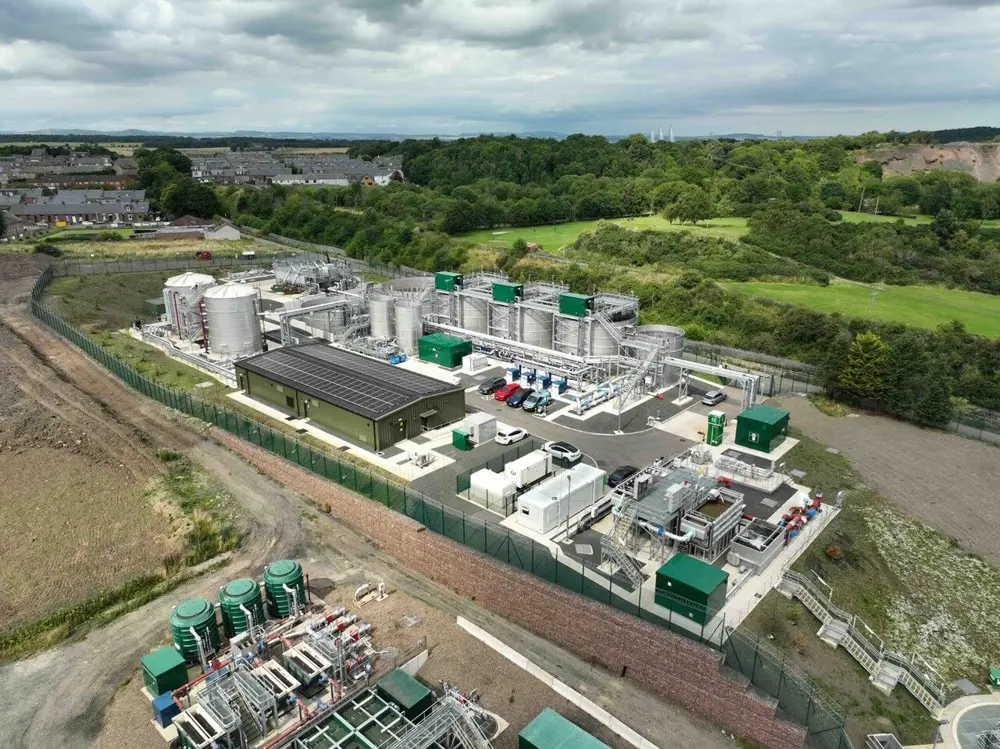
The Winchburgh site replaces the old treatment works that served the town
Scottish Water already had a model for a similar facility at Inverurie, in Aberdeenshire, where it had built its first plant using Nereda® technology. This biological treatment process, provided by Dutch engineering consultancy and the technology’s developer Haskoning, intensifies and enhances naturally occurring processes to allow all stages of treatment to take place in a single tank. This process operates one batch at a time with multiple treatment reactors meaning that increased volumes of wastewater can be treated faster, using fewer chemicals in a smaller site area and with a much-reduced carbon footprint.
Natural treatment
Nereda® uses microorganisms that occur naturally in sewage and wastewater to break down organic pollutants. The process drives the natural formation of biological ‘granules’ that attract organic matter through different biological processes, which then settle quickly to leave clean wastewater. This differs from conventional activated sludge technology, which relies on slower settling floccular biomass and requires larger tanks for both treatment and settlement.
Nereda® improves on the activated sludge process by monitoring and controlling the process conditions, such as aeration rates and temperature. The granules form naturally when selective pressure is applied. As a result, the microorganisms produce sticky polymeric substances. This means that pollutants such as nitrogen and phosphorus, which usually needs a chemical addition for removal, accumulate into denser granules that settle much faster.

The Nereda® technology was invented in the Netherlands in the early 2000s by Delft University of Technology and Haskoning. It now operates in 21 countries, with about 120 projects worldwide. Operational experience has shown the process typically consumes about 50% of the energy of traditional wastewater treatment processes and requires 75% less space © Haskoning
These granules naturally form a layered structure with different levels of oxygen. Each particle effectively becomes a microreactor (which in the older process would need separate tanks). The Nereda® process does not need stirring or any moving equipment. The settled granules are retained in the reactor to treat the next batch of crude wastewater. Using microorganisms to break down the pollutants reduces the need to add chemicals to the sewage and allows large volumes of waste to be treated hygienically.
Excess biomass is removed from the process and is currently sent through traditional sludge processing routes or to help set up new facilities using the Nereda® process. The granules have also been found to contain a high proportion of naturally occurring biopolymers, which can be harvested as a product known as Kaumera for use in a range of applications from bio-stimulants in agriculture through to coatings and thickening agents in manufacturing applications.
Haskoning was brought on board to assess how the process would work at the site and feed that into the design process. “Principally we consider the crude wastewater operating window and the current and future permit requirements of the plant in order to present a reliable solution to the client,” says Haskoning’s Andrew Dyne. “And then going forward we look to optimise the process performance and plant operations to provide the best value while maintaining the client’s obligations. The Nereda® process is flexible, so we can tailor the process to target the performance we need and even optimise it for future requirements.”
This performance is assisted by the Nereda® process controller, which uses machine learning trained on data from the site’s instrumentation to optimise and predict the conditions in the plant to keep the effluent to the required quality. “It predicts how the plant can operate optimally as the flow and load to the plant changes,” Paul Lavender, Director of Water Utilities at Haskoning, explains. “For example, in wet weather the organic composition of the crude wastewater will be more dilute than in dry weather. The Nereda® process controller algorithm anticipates and predicts the treatment conditions required to treat crude wastewater to the required output. By monitoring the inlet quality, it can manage changing conditions to maintain the output quality, while minimising energy consumption.”
Sustainable construction
Nereda® alone presented many advantages to reduce energy use, says Project Manager Colin Maybury from Scottish Water, but the company aimed to reduce carbon emissions further with the Winchburgh project – part of a commitment to halve embodied carbon by 2026 and achieve net zero by 2040 – led it to consider different methods of construction. Scottish Water’s alliance partner ESD – a joint venture between Binnies, Galliford Try and MWH Treatment – had led construction of the Inverurie plant. At Winchburgh, it also had to reduce the build time and keep costs low.
With the project plan starting in 2019, the onset of the COVID-19 pandemic and resulting lockdown firstly meant that the team needed to adapt its usual design process – meeting virtually, which was unusual at the time, and collaborating on the design using BIM (building information modelling) software.
Nereda® uses microorganisms that occur naturally in sewage and wastewater to break down organic pollutants.
Often used in construction, BIM software creates 3D models where all the components are tagged with their origin and specifications, so users can click on each element to see all the relevant details. “Scottish Water were in Scotland, ESD had people in Manchester and one in France,” says Alan Ford of equipment supplier EPS. “We were at our head office in Ireland, and Haskoning were in the Netherlands. We used the 3D model as our main method of collaboration in virtual meetings. That led to an agreed design that we could then use for the next stage of the project.”
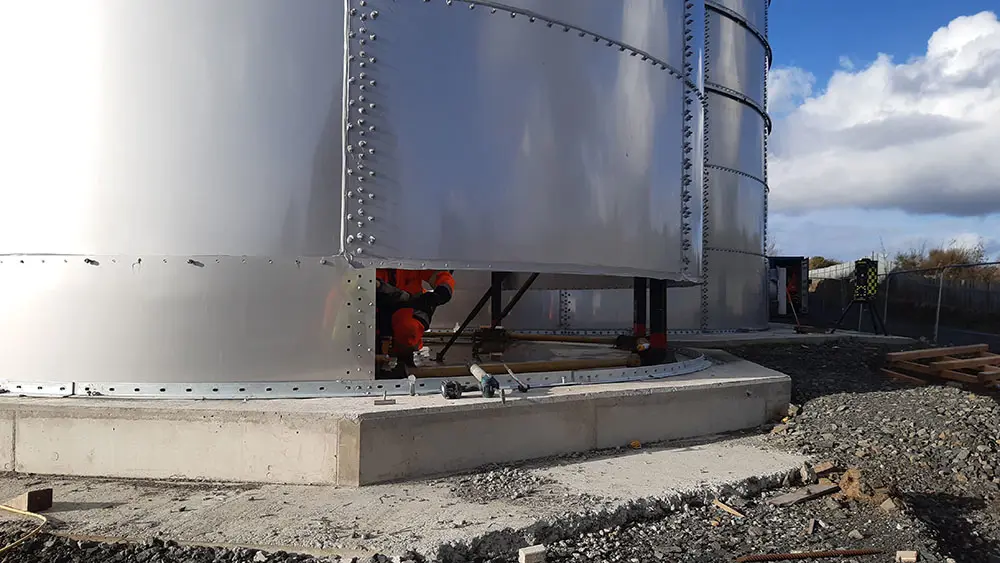
Components of the wastewater treatment works were prefabricated off site and assembled on site
Building the various units of the plant off site – at EPS’s factory in Mallow, County Cork – was another important factor in improving the project’s environmental impact, Ford explains. “The quality is better, production is better and there’s less waste, which all drives down the amount of carbon emitted during the project. It’s indoors and we can control all the conditions. Production rates are two to three times faster than traditional on-site works.”
EPS even assembled many of the plant’s various subunits in the Mallow factory. “We actually took the on-site team [based in Scotland] to Ireland to witness it being put together, tested and taken apart,” adds Ford. “When the lorries arrived on site in Scotland, they knew which pieces were coming in which order and could offload them and assemble them straight away. It greatly reduced construction times.”
To help streamline the on-site assembly process, the team developed the 3D BIM model into an animated sequence showing how the on-site team should build the plant, and introduced the dimension of time into the model, known as 4D synchronisation. “It starts with an empty field and builds the elements onto it,” Ford explains. “It makes everything very visual. Rather than looking at lines on a chart, you can see easily the multiple construction activities happening at the same place and you can reorder the construction sequence to pull them apart.” Maybury adds that 4D synchronisation helped identify if cranes needed on site were at risk of colliding with structures and solve problems before they occurred. “That was picked up in the animation and changed before it came to site. I’ve never seen a major project go as smoothly on site as Winchburgh.”
Sharing the 4D synchronisation with the suppliers also helped the project run more smoothly, Stephen Fraser, Operations Manager of ESD, adds. “Our suppliers would suggest how we could improve the construction sequence. We learned a lot about how each piece of equipment could integrate into the process to perform better.”
The project team also factored in lessons that it had learned from the construction of the previous plant at Inverurie. “That was an important step for us to work with the Nereda® technology, but the plant was built using concrete tanks,” explains Maybury. This was Scottish Water’s traditional method of building wastewater treatment works, with the tanks cast on site using reinforced concrete. The manufacture of these – particularly the cement component – consumes a large amount of energy and increases carbon dioxide emissions.
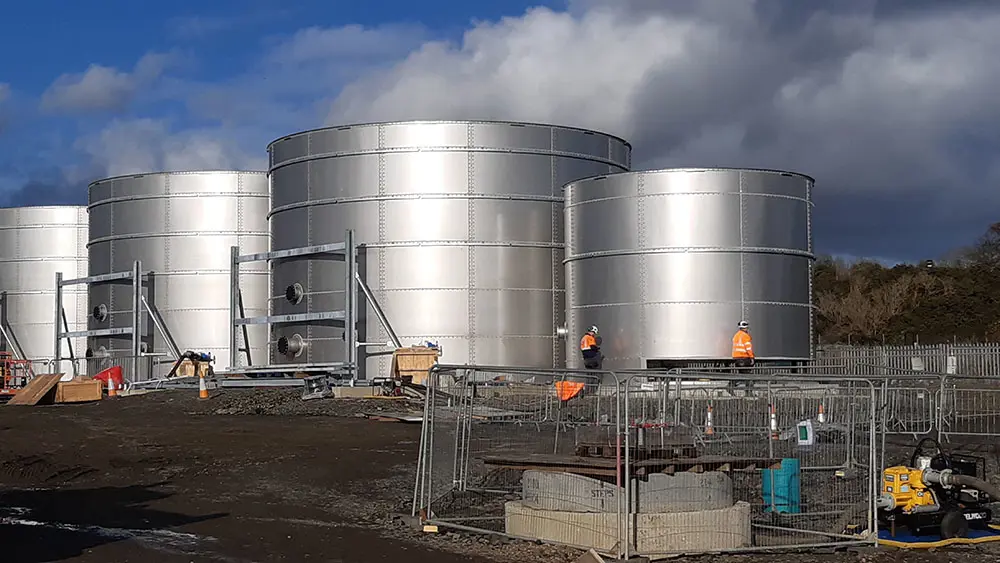
Using steel tanks at the Winchburgh site immediately reduced the project’s carbon footprint
The project team decided to use stainless steel for the tanks, reducing carbon emissions the project would have incurred compared with using concrete. “We also recognised what we could do with above-ground pipework, which again reduced carbon emissions from excavation,” Maybury says.
“Going to stainless steel was a big step change in terms of carbon reduction and speed of build,” adds Fraser. “Concrete is one of the highest-carbon materials you can choose, so replacing it with steel reduced the carbon profile of the project immediately. We also chose steel because of its recyclability, so it improved the lifecycle environmental performance as well.” Switching to steel tanks reduced the project’s embodied carbon emissions (CO2e) by more than 500,000 kilograms.
Taking lessons forward
Another important lesson the team learned from Inverurie was that, although Nereda®’s biological activity removes phosphorus-containing pollutants from waste, when the Aberdeenshire plant first started up, “the biology took a little bit of time to get going”. Fraser says: “In the older wastewater treatment process, we’d add ferric sulphate, which we just call ferric, to the effluent. It binds to the phosphorus and creates an insoluble compound that settles with the sludge. We decided to put a ferric dosing plant in at Winchburgh, so we could use it in the commissioning phase of the plant, then switch it off and keep it as a standby in case of potential failures in the future.” Dyne adds that the dosing plant might be needed to maintain performance as more houses are connected to the Winchburgh sewers and the plant adapts to the increasing volume of waste flowing into the plant. That extra ferric dosing might also be needed in particularly cold weather conditions, which tend to slow down microbial activity.
“Concrete is one of the highest-carbon materials you can choose, so replacing it with steel reduced the carbon profile of the project immediately."
Colin Maybury, Project Manager at Winchburgh
Haskoning also used the Inverurie plant to help improve the performance of Winchburgh. “We can start a Nereda® reactor with no sludge granules in it, by fine-tuning the process to encourage granule growth and then maintaining that growth. But for Winchburgh, we transported some sludge granules from Inverurie that already had the capability to degrade the pollutants in the wastewater. That allowed us to spring forward in the programme and ensure that Winchburgh reached its required performance faster.”
The Winchburgh plant became operational in May 2024 after almost three years of construction – completed on time and within budget – and completely replaces the former plant, which is being decommissioned and demolished. Its initial licence is to treat the wastewater of a population of 9,000 people, which will rise to almost 16,500 at its full design capacity. While it is not smaller than the previous site, the use of Nereda® means that only about half the area is needed compared to a conventional plant treating a similar amount of wastewater. The plant includes solar panels on the roof of the site’s control block that supply a significant proportion of its energy needs. And there are also on-site electric vehicle chargers to support electrification of Scottish Waters fleet of vehicles.
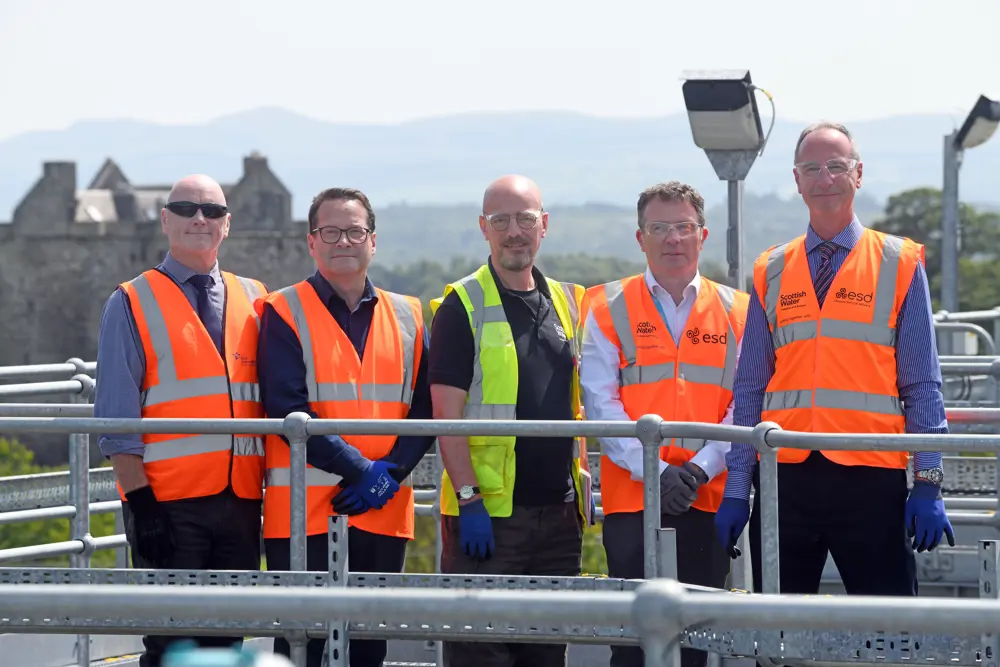
The team who won the Royal Academy of Engineering's Major Project Award for Sustainability: (L–R) Andrew Dyne, Haskoning, Alan Ford (EPS), Jonny Tyler (Scottish Water), Stephen Fraser (ESD), and Colin Maybury (Scottish Water).
As part of the community engagement part of the project, which included meetings with local residents and businesses, Scottish Water created an online ‘virtual room’ for the local community to access information about the project and the teams delivering it onsite. “This was particularly beneficial owing to the COVID restrictions in place at the time,” adds Maybury. Once restrictions were lifted, community engagement programmes included visits to the site by local primary and secondary schools, to teach them about the importance of water treatment and to inspire students to consider careers in construction and engineering.
Scottish Water is now planning another wastewater treatment plant, south of Edinburgh. ESD is developing the design, which is following the Winchburgh design closely. With its innovative construction and engineering processes and the environmental and societal benefits produced, the Winchburgh wastewater treatment project is a blueprint for both this and similar projects in the pipeline. The hope is that these will continue to bring similar opportunities to other parts of Scotland, and across the rest of the UK.
Find out more about the Major Project Award for Sustainability
Contributors
Andrew Dyne was Water and Maritime Contracts Manager of the Winchburgh
project and a senior representative of Haskoning. He has over 35 years’
experience delivering complex, multidisciplinary infrastructure solutions across
the water, wastewater, energy, waste, and renewables sectors.
Alan Ford is a Chartered Engineer with over 30 years’ experience in delivering
projects in the municipal and industrial sectors of the water industry. He was
EPS Water’s Technical Manager for both of Scottish Water’s Nereda® plants to date.
Stephen Fraser is a civil engineer and project leader with over 20 years’
experience in infrastructure delivery for Scottish Water via Galliford Try.
He specialises in innovative wastewater solutions, team leadership, and
performance improvement.
Paul Lavender
Director of Water Utilities, Haskoning
Colin Maybury is a Chartered Engineer with 37 years’ experience in the
avionics, mineral processing and water industries. He was Scottish Water’s
project manager for the first Nereda® plant in Scotland, before taking a similar
role at Winchburgh.
Jonny Tyler
Commissioning and Handover Assurance Engineer, Scottish Water
Stuart Nathan
Author
Get a free monthly dose of engineering innovation in your inbox
SubscribeRelated content
Environment & sustainability

The extreme engineering behind life on an Antarctic station
Antarctica is one of the most challenging environments on the planet, but of enormous scientific importance to humanity. Technology and engineering is essential to enable the British Antarctic Survey's researchers to pursue their science effectively in this awe-inspiring landscape.
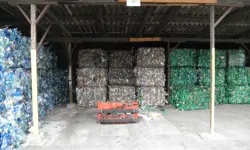
Recycling household waste
The percentage of waste recycled in the UK has risen rapidly over the past 20 years, thanks to breakthroughs in the way waste is processed. Find out about what happens to household waste and recent technological developments in the UK.

Upgrade existing buildings to reduce emissions
Much of the UK’s existing buildings predate modern energy standards. Patrick Bellew of Atelier Ten, a company that pioneered environmental innovations, suggests that a National Infrastructure Project is needed to tackle waste and inefficiency.

An appetite for oil
The Gobbler boat’s compact and lightweight dimensions coupled with complex oil-skimming technology provide a safer and more effective way of containing and cleaning up oil spills, both in harbour and at sea.
Other content from Ingenia
Quick read

- Environment & sustainability
- Opinion
A young engineer’s perspective on the good, the bad and the ugly of COP27
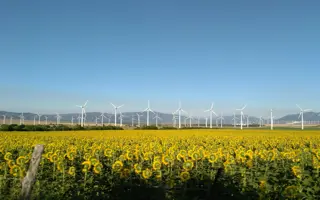
- Environment & sustainability
- Issue 95
How do we pay for net zero technologies?
Quick read

- Transport
- Mechanical
- How I got here
Electrifying trains and STEMAZING outreach

- Civil & structural
- Environment & sustainability
- Issue 95